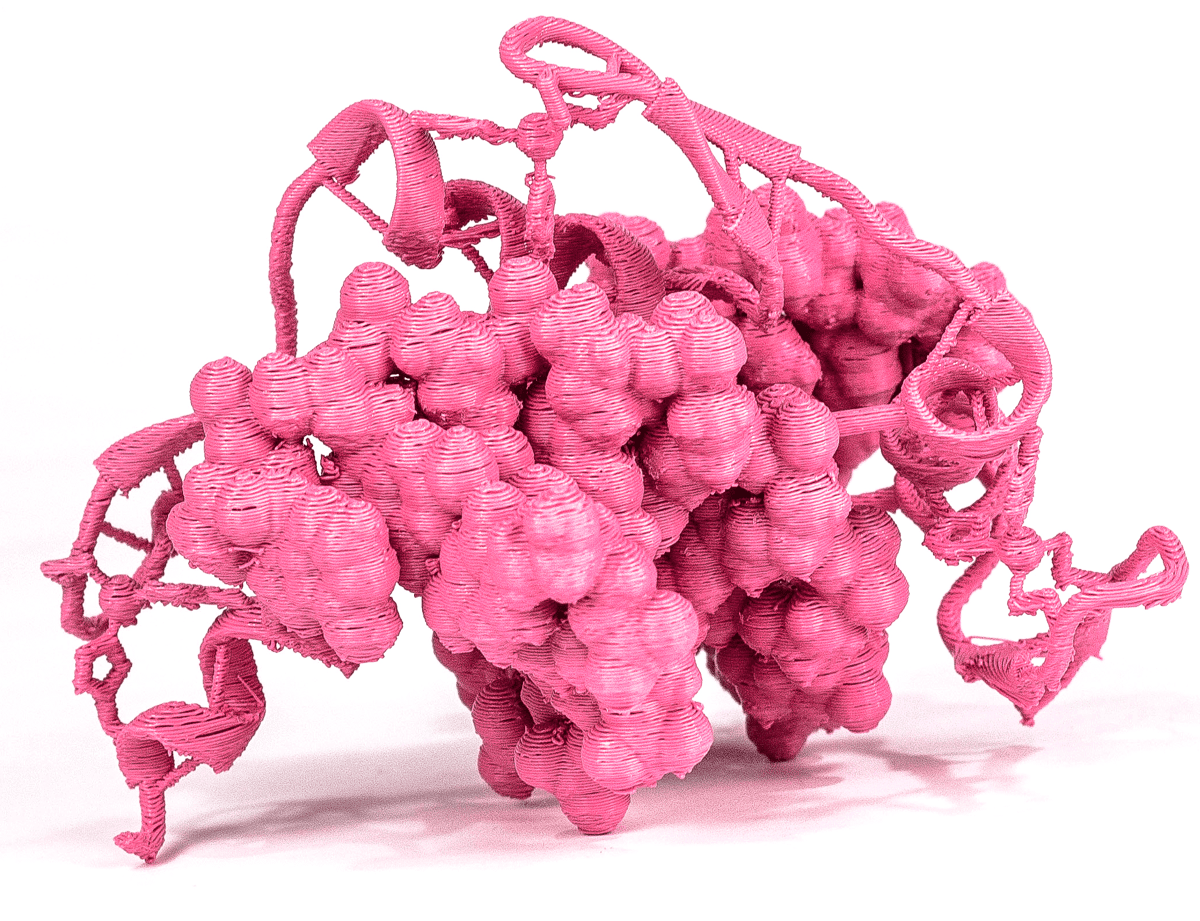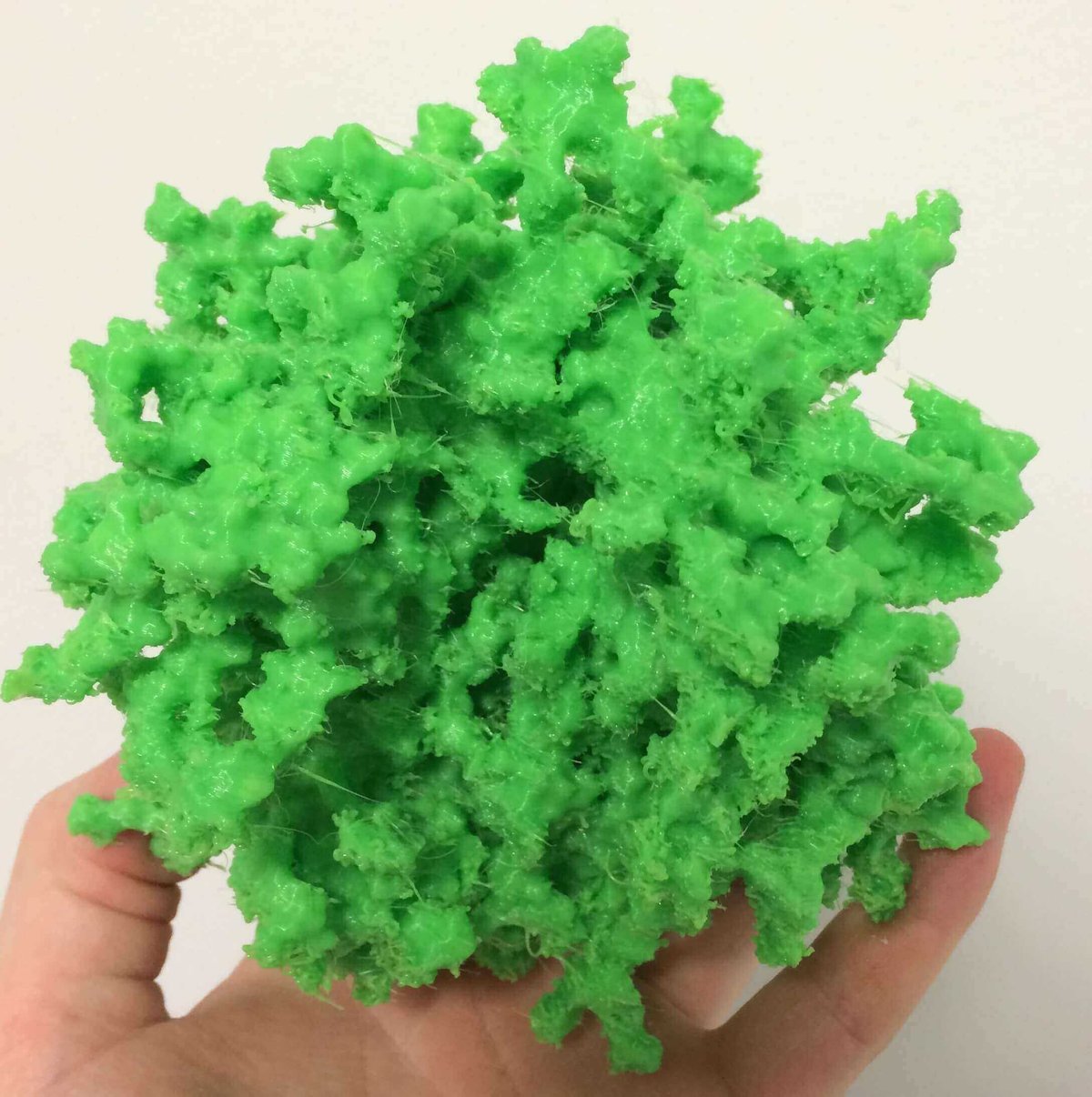Biochemistry researchers are 3D printing models of complex molecular structures, and using them as a teaching aid for students and educators.
Don’t Miss: 3D Printed Pollen Models are Innovation Awards Finalists
At the Brandeis University MakerLab, researcher Eduardo Beltrame is teaching students and teachers how to fabricate complex molecular structures on desktop 3D printers.
When you consider the forms that these structures take – helixes, oblique angles, large overhangs and intricate crevices — it’s pretty challenging!
But that hasn’t deterred Beltrame, who’s put together a series of step by step instructions for his fellow academics.
Essentially, the process beings with a tool called UCSF Chimera, a free and open source molecular visualizer. In Beltrame’s tutorial, he shows how Chimera can be used to generate 3D printable molecular models for Fused Filament Fabrication (FFF) 3D printers.
Next, he uses an application like Netfabb to repair mesh and ensure printability, and then imports his models into slicing software Simplify3D. This is vital for slicing huge files with ease, and being able to apply custom support structures to different parts of the model.

Complex Molecular Structures look like Giant Boogers
Elsewhere, James Tyrwhitt-Drake is another researcher on the forefront of 3D printed molecular models.
A colleague of Beltrame, Tyrwhitt-Drake works with the U.S National Institutes of Health (NIH) at the NIH 3D Print Exchange – a community-driven portal that provides bioscientific and medical models for 3D printing.
Tyrwhitt-Drake recently printed a flexible model of an HIV protein, the ENV trimer, together with antibodies binding to it. The model was requested by a researcher at NIH who solved the 3D structure of the protein.
The model needed to be printed in flexible material in order to determine how the antibodies bind to the protein. By mimicking the flexibility of the protein, allow researchers would have a better grasp on how these different structures come together.
With these requirements in mind, Tyrwhitt-Drake 3D printed all of these models using NinjaFlex material. Achieving high-quality results with flexible materials is no easy feat, but he succeeded in printing both a highly complex model AND complex support structures.
Tyrwhitt-Drake admits that removing the supports and cleaning up the model posed a bit of a challenge, but the end result allows researchers to better study protein molecules with a completely new perspective.
What do you think? Would you fancy taking a crack at 3D printing a complex molecular structure on your 3D printer? Visit these resources and let us know how you get on.
Source: Simplify3D

License: The text of "All About 3D Printing Complex Molecular Structures" by All3DP is licensed under a Creative Commons Attribution 4.0 International License.